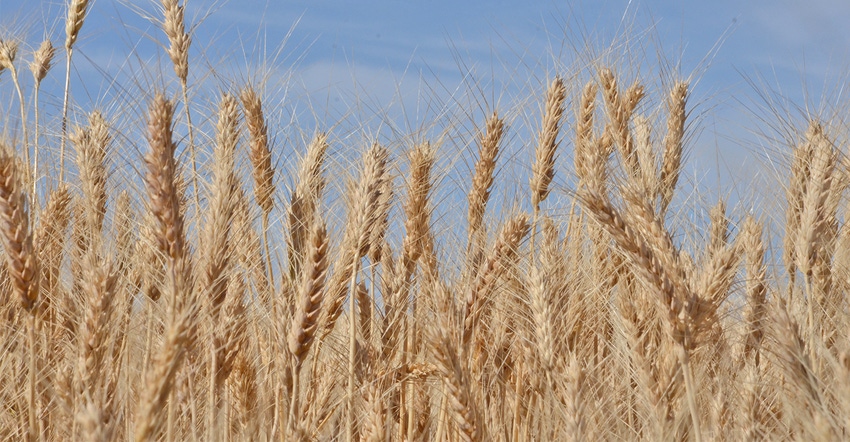May 17, 2018

By Ron F. Meyer
Can we influence protein contents with wheat production management strategies? Last season, the wheat market needed protein content and was willing to pay premiums for it. However, many of our wheat fields tested low for protein; consequently, price discounts were assessed to wheat loads delivered to elevators. Those fields that had acceptable protein levels were paid a premium, and as a result, some growers are interested in managing wheat fields for better protein levels.
First, research has found that there is an inverse relationship between yield and protein levels. As wheat yields increase, protein levels tend to decrease. A simplified explanation for this phenomenon is that high yields are the result of extra starch accumulation within wheat kernels. This extra starch essentially “dilutes” protein content. Wheat yield is directly correlated with the starch content of wheat kernels. As the starch content increases during grain fill, kernels get heavier, which increases test weight and leads to more yield (produced pounds per acre increase). Wheat kernels contain approximately 65% starch, and this starch content is extremely sensitive to the growing season’s environment at the end of the season.
Wheat kernels contain approximately 8% to 15% protein. Protein levels are a direct function of the amount of nitrogen within the plant during later stages of production. In fact, protein tests made on wheat kernels measure the nitrogen content to determine protein levels. Protein begins accumulating within kernels during grain fill. Research has found that 10 days after flowering, protein begins to accumulate in kernels; and by 20 days after flowering, 50% of protein has been placed into developing kernels. During this time, starch is also being deposited into kernels. Growing conditions and adequate nitrogen amounts after wheat plants flower determine the protein levels in grain. Excessive heat and drought during this grain-filling time period lowers the amount of starch deposited into kernels, which increases protein percentages. Better-than-average moisture conditions during grain fill will consequently lower protein percentages.

Research shows what factors may influence protein content in wheat.

Nitrogen and wheat
Can protein levels coming off a wheat field tell us if nitrogen was yield-limiting? Colorado State University researchers found a direct correlation that suggests protein levels in wheat are tied to nitrogen management. Thus, the rule of thumb for nitrogen management is as follows: Wheat fields testing less than 11.1% protein had yield-limiting low levels of nitrogen fertilization. Wheat fields that have grain protein levels above 12% may not have been yield-limited by nitrogen fertilization.
Can we fertilize to influence protein in wheat? Eighty percent of a wheat plant’s nitrogen accumulation is taken up prior to flowering. However, that leaves 20% of a plant’s nitrogen needs taken up after flowering and during grain fill. Researchers at Oklahoma State University have found that late applications of nitrogen can increase protein levels in wheat. These researchers applied nitrogen to wheat test plots as late as the flag leaf stage (right before heading), and they found that later nitrogen applications increased protein contents. These later applications increased wheat yields only slightly, but increased protein contents more. The application method was liquid nitrogen streamed onto fields. Nitrogen fertilizer type did not matter, but actual nitrogen amounts applied did matter. Better protein boosts were noted, with rainfall received right after nitrogen applications. Protein levels were increased by 0.05% protein content per pound of nitrogen applied. Therefore, it took 20 pounds per acre actual nitrogen to raise protein levels 1%.
Similar protein results could be achieved with adequate nitrogen fertilization earlier in the growing season. Many wheat fields are fertilized early in the spring with herbicide applications. Adequate nitrogen applications at this time during the growing season would affect protein levels also.
Soil and plant tissue tests will determine nitrogen amounts needed. Setting realistic yield goals and knowing current nutrient test levels will keep applications near economic levels.
Keep in mind that yield should drive crop input decisions for each field. Planting varieties that are proven to be adapted to our area, and managing other inputs such as weed and disease issues, need to have production priorities first. Protein premiums are not consistent, but there are nitrogen management decisions that can affect protein contents when protein production is profitable.
Source: Brian Arnall, Oklahoma State University
Meyer is an Extension area agronomist for Colorado State University.
You May Also Like




